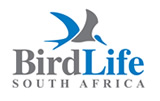Core team member: John Measey
Project Background
Bird visitors are actively courted into peri-urban gardens with resources including food, nesting boxes and bird-friendly habitats. However, aside from the expected indigenous species, some visitors are alien species while others are domestic exotics, and these latter groups often monopolize the distributed resources. Alien and domestic exotic birds are often attracted by resources in peri-urban areas that facilitate their spread (such as tall trees for nesting, or lawns and ponds for feeding). Are these alien birds desirable, or would home owners prefer help with their removal?
This study seeks to engage with stakeholders in peri-urban areas to ask: What are the perceived values of birds of different origins? What aspects of their environments would stakeholders be willing to change to alter the birds that inhabit their neighbourhood? Can information brokerage on native and alien bird species change behaviours and gardening practices of peri-urban participants, that help facilitate management control or remove harmful species?
This MSc study will involve stakeholder surveys and focus groups to determine public perceptions of the values of alien and native bird species.
Further Reading
- Evans, T., Kumschick, S. and Blackburn, T.M., 2016. Application of the Environmental Impact Classification for Alien Taxa (EICAT) to a global assessment of alien bird impacts. Diversity and Distributions, 22(9), pp.919-931.
- Fuller, R.A., Warren, P.H., Armsworth, P.R., Barbosa, O. and Gaston, K.J., 2008. Garden bird feeding predicts the structure of urban avian assemblages. Diversity and Distributions, 14(1), pp.131-137.
- Lerman, S.B. and Warren, P.S., 2011. The conservation value of residential yards: linking birds and people. Ecological applications, 21(4), pp.1327-1339.
Key Contacts
Prof John Measey Tel: 021 808 2385; email: johnmeasey@gmail.com
View full details (PDF)
